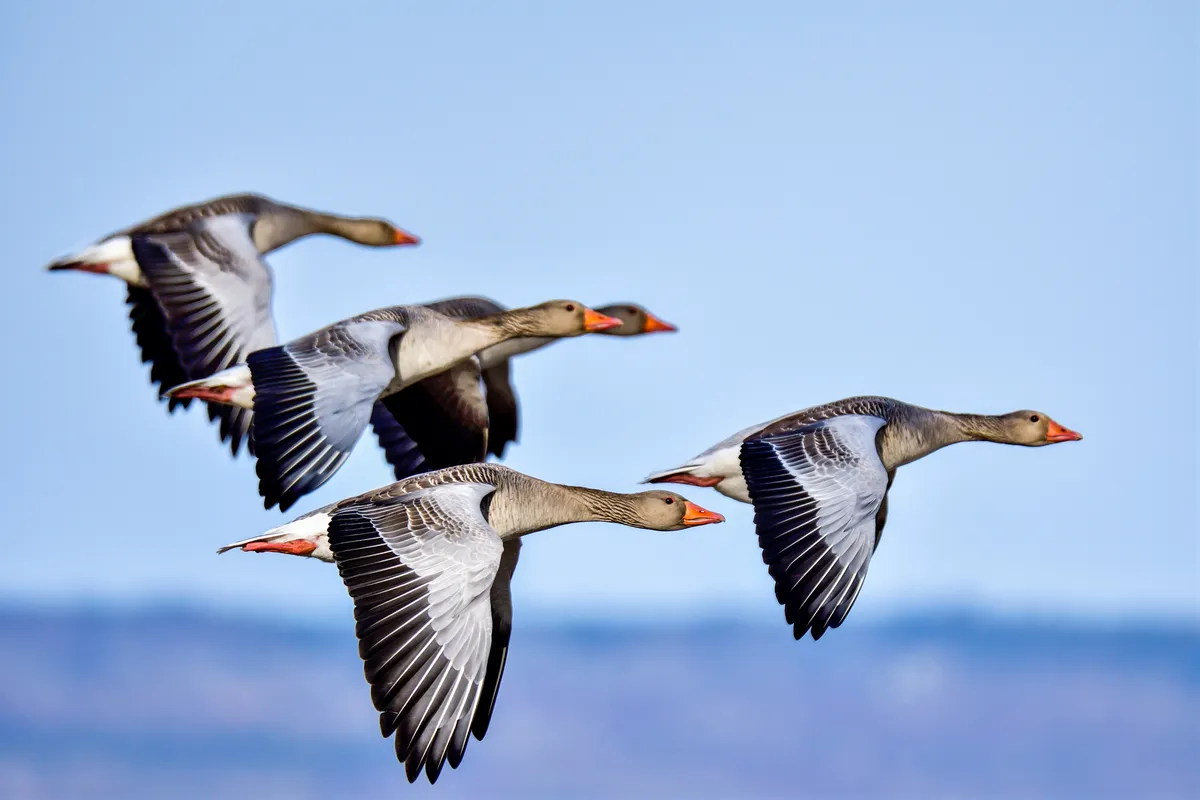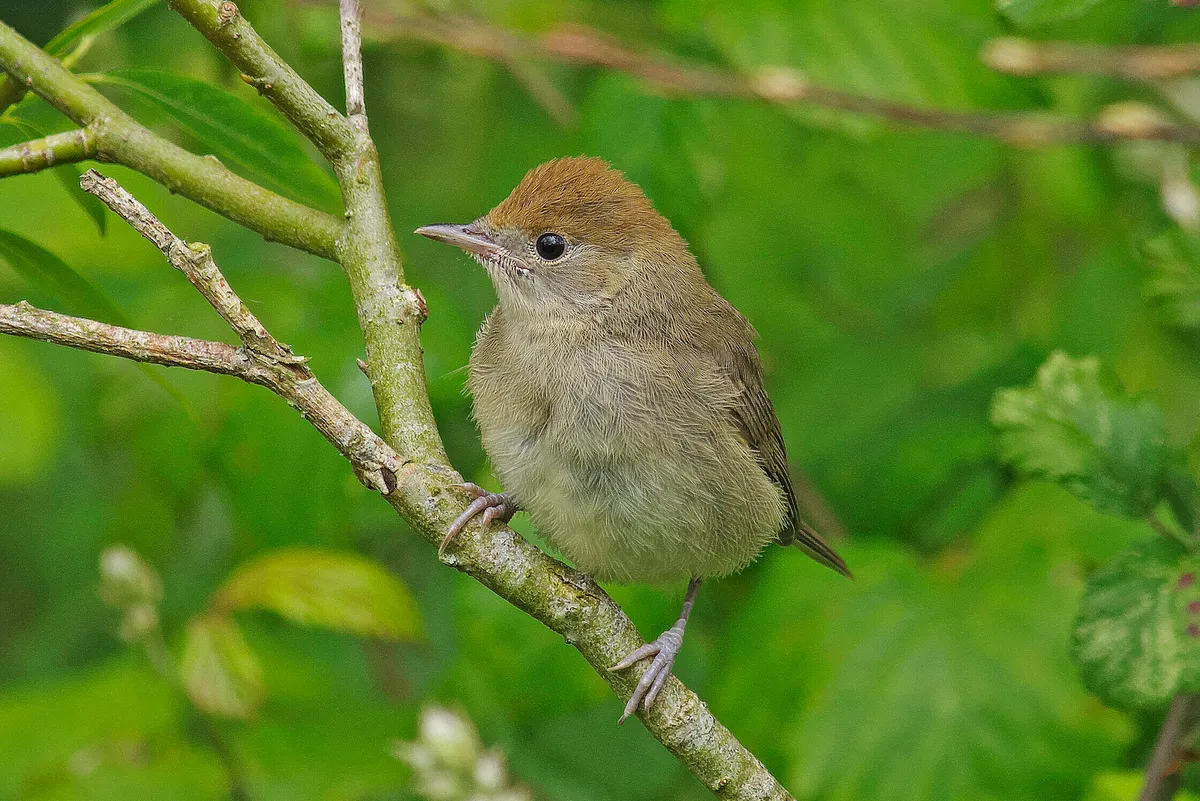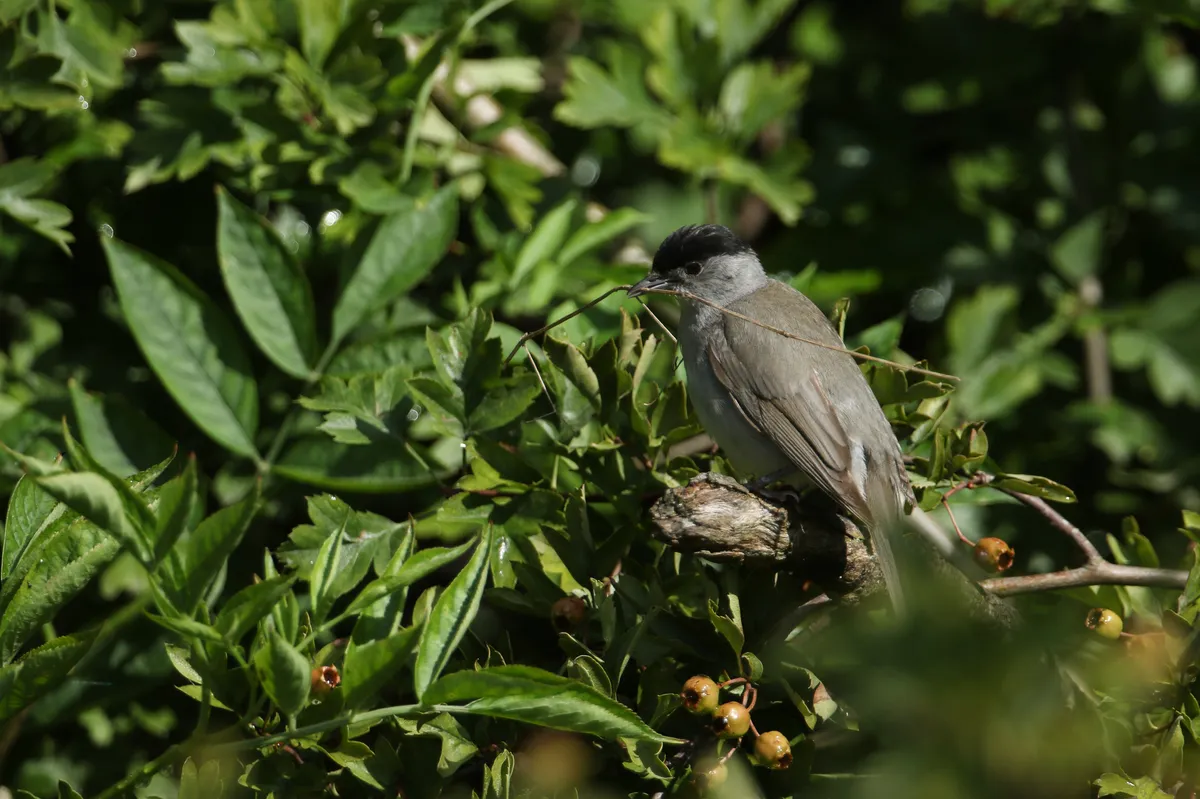The blackcap (Sylvia atricapilla) is the only warbler that comes to the bird table in autumn and winter, where it is attracted to suet and sunflower hearts, and it can be found guzzling many a berry in the shrubbery.
At feeding stations, it has acquired a reputation for being particularly aggressive to other visitors. Its boldness allows it to be easily seen – hardly a common trait among this skulking group of birds.
In this guide we take a closer look at the blackcap, including their song, migration and the difference between the male and female.
Interested in learning more about Britain's birds? Check out our guides to finches, tits, woodpeckers and thrushes.
Warblers of the UK
Warblers are a group of small, often green-brown birds with varied songs. Learn more about these spring and summer songsters with our guide to the warblers of Britain.

What does a blackcap look like?
The blackcap has greyish plumage with a neat black (male) or brown (female) cap. It is slightly more sluggish movement than other warblers, definitely less feverish.

What does a blackcap sound like?
Blackcaps have a loud and dominant song. It characteristically starts hesitantly, but the phrase ends up bold and fluty, and it has a little of the misplaced tune vibe you might hear whistled by the person who fixes your dishwasher or car.
In spring, the rate of singing by a male is related to the density of foliage in its territory – the faster it is the denser the vegetation – which is helpful to a female.
Blackcap song lasts for a longer season than most warbler songs, often well into July. By autumn, blackcaps are abundant wherever there are berries.
Credit: Maurice Baker
Blackcap distribution and population
The blackcap is common in the UK, seen from March-October, with a few in winter. There are 1.1 million pairs in UK.
Blackcap migration
Studies have shown that wintering birds come mainly from Central Europe (especially Germany). Fifty years ago, though, this never happened. The birds used to winter in Spain but have changed their migration, mainly owing to the provision of food in gardens.
Most British blackcaps, however, are summer visitors, wintering in Spain and Portugal and arriving here in the first week of April.
Bird migration guide
Throughout the year, millions of birds migrate to and from the British Isles. Our expert guide explores why some birds arrive in the UK in particular seasons and others leave, which species migrate and where they go when they leave Britain's shores.

Blackcap habitat
Blackcaps are very common in woodlands and woodland edges.

Blackcap nesting
In its territory, the male builds a series of nest “start-ups”, which the female inspects. She might select just one to embellish, or simply build a new one from scratch.


